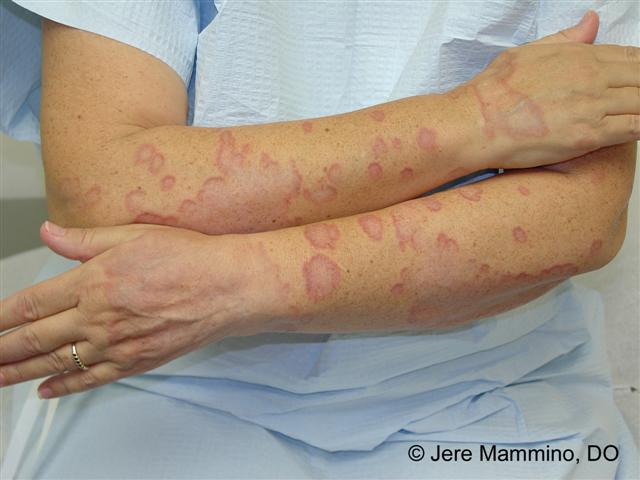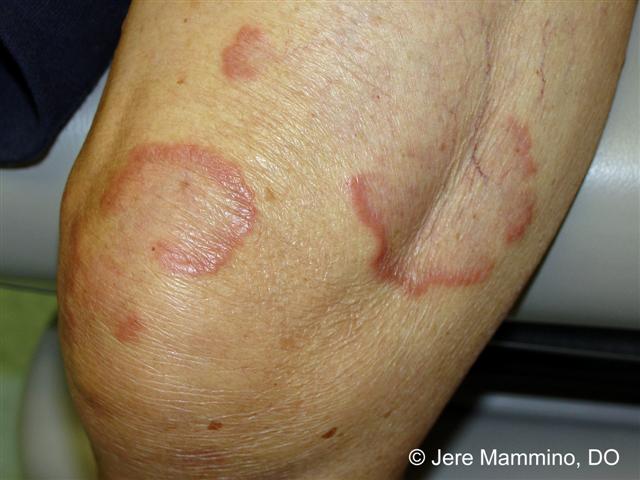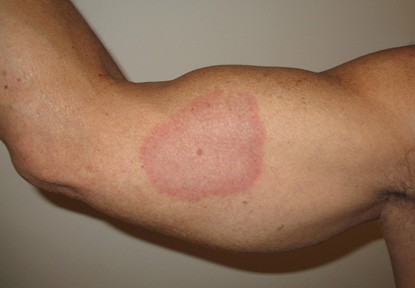From American Osteopathic College of Dermatology
Granuloma annulare (GA) is a common condition of unknown cause. It appears most often over knuckles and other joints or in places that are subject to frequent, mild injury such as the back of the hands or top of the feet. It is seen most often in older children and young adults.
The “rash” of GA is symmetrical (appears on both sides of the body more or less evenly) and formed by skin colored bumps. The bumps often expand or join to form rings. The center of each ring may be a little depressed, pale or light brown. GA usually has no symptoms, but it may be tender. It may come and go, only to return again. Most cases clear up after a few years with or without treatment.
Sometimes the diagnosis is not obvious, and other conditions may be considered. In such cases, a small biopsy will help to confirm the diagnosis.
In most cases no treatment is required. If treatment is desired, it may be helpful to apply a prescription cortisone cream to the skin. Cortisone can be injected into the lesions themselves if topicals fail.
GA is occasionally quite widespread (generalized GA) and this may be an entirely different condition. In these cases the bumps are often smaller and the rings harder to see. Most patients are over age 40, and there is often severe itching. Patients with generalized GA may have a tendency to diabetes mellitus and other internal problems. A biopsy and blood tests are usually needed.
In very widespread or bothersome cases, potent treatments are tried. These include Trental and Ultraviolet treatment (PUVA). Although often successful the GA tends to return eventually after they are discontinued. Other treatments occasionally tried when these fail are Dapsone, potassium Iodide and oral steroids.
